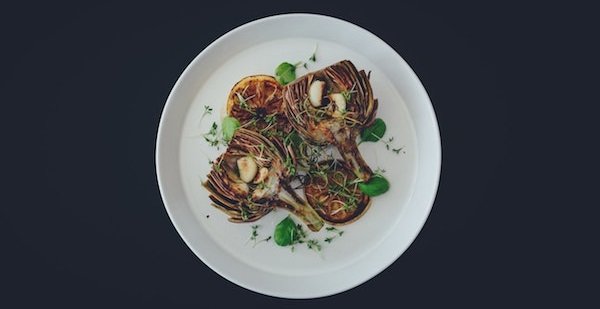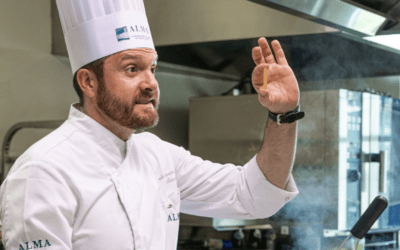From soufflé to sous-vide, French cuisine is the gold standard of global gastronomy. With its Epicurean culture, France has dazzled and charmed the world with its culinary traditions for centuries. For the French, eating is not just an act; it’s an art form, heavily ritualized and codified. Declared a “world intangible heritage” by UNESCO in 2010, French cuisine has an abundance of fascinating and rich history behind it.
Anyone working in the hospitality industry, but especially those in the culinary arts, should know about the roots of French food and understand its evolution through the ages. You could even use this knowledge to wow the recruiter at your next interview! No time to study? Hosco has got you covered. We’ll bring you up to speed with a brief history of French cuisine through the chefs that defined their eras and those that continue to push the boundaries:
Francois Pierre de la Varenne (1615-1678)
Lasting contribution: emphasis on local and seasonal ingredients; first true French cookbook.

La Varenne penned the cookbook Le Cuisinier François in 1651, one of the founding documents of modern French cuisine. It became an instant classic at a time when culinary traditions were passed down mostly orally, and recipes and techniques were shrouded in secrecy. In 1653, it was the first French cookbook to be translated into English. La Varenne was one of the first chefs to eschew the use of expensive, imported herbs and spices and to promote the use of local, seasonal ingredients – still a cornerstone of French cuisine today.
Marie-Antoine Carême (1784-1883)
Lasting contribution: haute cuisine style of cooking; the original French “mother sauces.”
If La Varenne built the foundation of modern French food, then it was Marie-Antoine Carême who elevated it to haute cuisine. Called by many the “original celebrity chef,” Carême favored an elaborate, extravagant style, catering to the whims of royalty and wealthy families throughout much of his career. He is best known for his pièces montées, spectacularly decorative desserts inspired by architectural shapes, sometimes several feet high. But his true legacy, according to some, is his creation of four “mother sauces,” as they’ve come to be known: Allemande, Béchamel, Espagnole, and Velouté.
Auguste Escoffier (1846-1935)
Lasting contributions: popularized haute cuisine; Le Guide Culinaire; kitchen brigade system.
Known to the French as the “roi des cuisiniers et cuisinier des rois” (“king of chefs and chef of kings”), Georges Auguste Escoffier is the original father of modern French cuisine. Working alongside César Ritz in Paris, London, and Monte Carlo, he dominated Europe’s fin-de-siècle culinary scene and popularized haute cuisine, rendering it more accessible for contemporary society. Although his technique was largely based on and derived from Carême’s, Escoffier pared down and simplified the lavish, ornate style of his forebear. He codified Carême’s “mother sauces” (tweaking them slightly, adding a fifth sauce) in his iconic Le Guide Culinaire, published in 1903. It’s widely considered to be the most influential French cookbook and more than a century after its publication, it’s still a foundational reference for top chefs around the world.
Ever wonder where the terms chef de partie, sous-chef or garde-manger come from? Escoffier! Another one of his contributions to modern French cuisine was the brigade system of kitchen hierarchy, which employs a French term for each and every position, from the chef de cuisine to the commis to the plongeur.
Eugénie Brazier (1895-1977)
Lasting contributions: Michelin history maker; Lyonnaise cuisine.

France’s culinary history has long been dominated by men, but Eugénie Brazier, known as “la mère Brazier”, was the first woman to be awarded three Michelin stars and also the first chef – man or woman – to have three stars at two different restaurants simultaneously. Brazier is responsible for the creation of Lyonnaise cuisine, a sort of regional antidote to the stuffier, haute cuisine of Paris and a precursor to what is known now as nouvelle cuisine. Her restaurants are two of the reasons that Lyon is known as the gastronomic capital of France and of the world.
Charles de Gaulle was a fan of Brazier’s, as was the German-American actress Marlene Dietrich, who traveled to Lyon often to indulge in one of Brazier’s signature dishes, langouste belle aurore, a whole lobster steeped in Cognac and cream. Fun fact: Brazier was honored with a Google Doodle on June 12, 2018, on what would have been her 123rd birthday.
Paul Bocuse (1926-2018)
Lasting contributions: the godfather of Nouvelle Cuisine; Bocuse d’Or prize.
Paul Bocuse was, until recently, a living legend within French culinary history. Like Auguste Escoffier before him, he was known around the world as the father of modern French food. Specifically, he was the most visible driving force of the Nouvelle Cuisine movement, a new style of cooking established around the 1960s, which sought to further simplify, refine and streamline the complexities of classic French cuisine. A student of Eugénie Brazier, Bocuse brought even more international acclaim to Lyon, firmly establishing it as a preeminent gastronomic destination.
His contributions to today’s culinary scene, both in France and on an international level, are numerous. Perhaps, his most important are the Bocuse d’Or cooking competition, held each year in Lyon, and his hospitality and culinary school, Institute Paul Bocuse, also located in Lyon. Bocuse died in January 2018 at 91 years old, in the same room where he was born, above his 3-Michelin-starred restaurant, l’Auberge du Pont de Collonges (also referred to simply as Paul Bocuse) just outside of Lyon.
Other notable names:
Georges Pralus and Bruno Goussault: The sous-vide cooking technique, literally meaning “under vacuum,” whereby food is cooked in a plastic pouch in water or with steam at low, regulated temperatures, is largely attributed to Pralus and Goussault. Pralus, a chef, and Goussault, a chef and food scientist, are said to have developed the technique independently then worked together to advance it.

Hervé This: The French chemist, 63, coined the term “molecular gastronomy,” hugely popular in today’s progressive culinary scene, and associated with chefs like Grant Achatz, Ferran Adrià and Heston Blumenthal.
We’ve delicately condensed 400 years of French cuisine into just over 1000 words. Beginning with one of the most influential cookbooks in history and ending with the master of Nouvelle Cuisine. You can now put this knowledge to good use in two ways. Firstly, utilize it to impress your family, colleagues or mentor. Secondly, use it as motivation to be creative, break barriers, and excel in the kitchen. You never know, it could be your name that appears on a list of legendary chefs in the near future.




